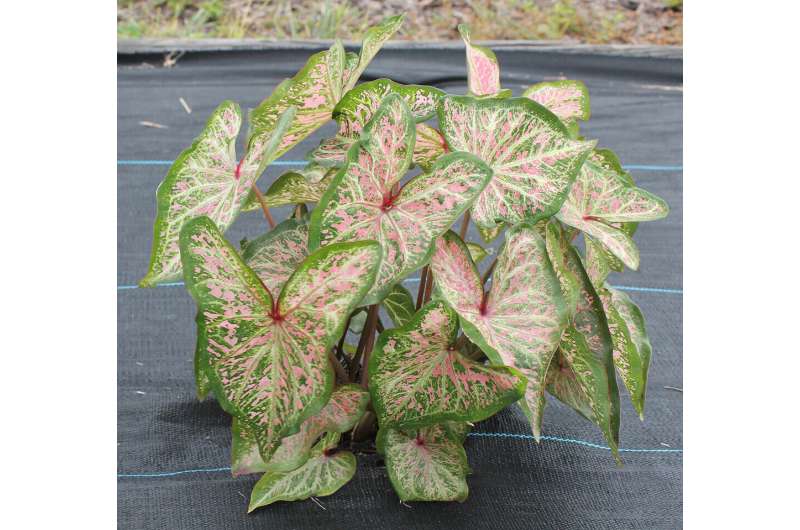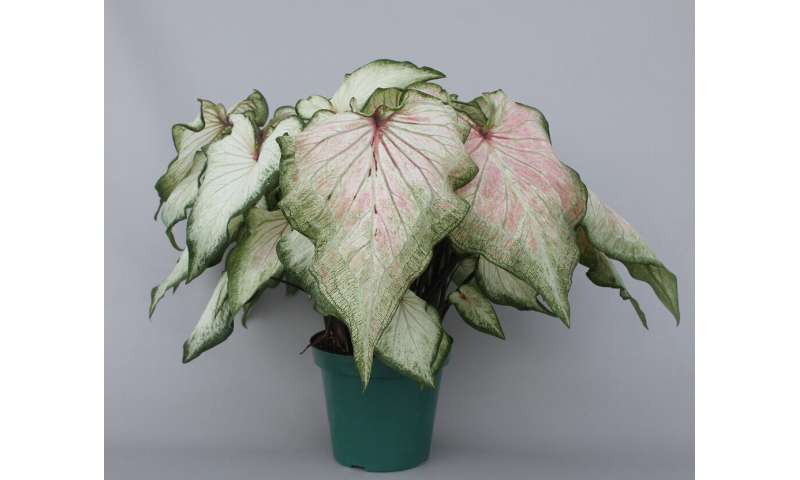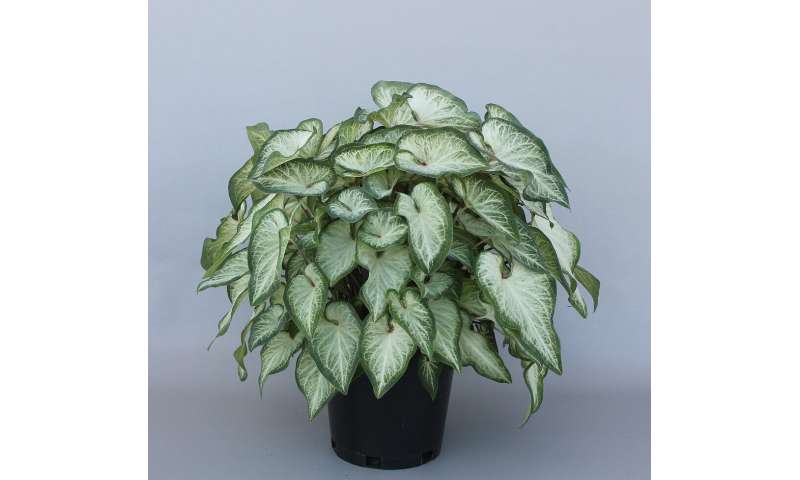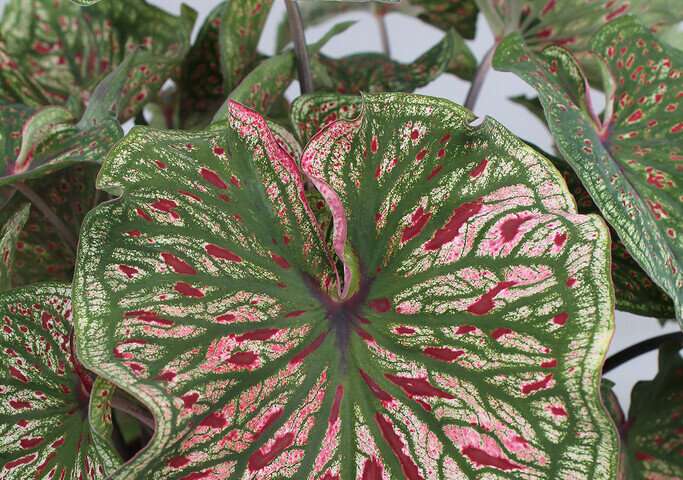Four new caladium cultivars for containers and landscapes

Caladiums are ornamental aroids highly valued for their attractive foliage that rivals the display of many flowers. Aroid is a common name for a large species of plants in the Araceae family. This family of plants is also often called the Philodendron or Arum family. There are over 100 genera and 3,750 species of aroid plants, most of which are from the tropics.
Caladium plants grow well in summer heat and rains and have a wide diversity of leaf shapes, colors, and vein patterns that are rarely found in other plant species. Essentially all commercially available caladium plants in the U.S. and in the world are produced from tubers. Florida growers produce all of the caladium tubers used by greenhouse growers, nurseries, landscapers, and gardeners across the U.S. and in the world.
Since 1976, the University of Florida has supported a caladium breeding program, the only public program of its kind in the world, at the Gulf Coast Research and Education Center, to meet the needs of the Florida caladium industry and the environmental horticulture industry for new caladium cultivars.
The program's main breeding objective is to develop new and novel cultivars that can produce attractive and robust plants with many bright, colorful leaves and with high tuber yield potential. The main breeding approach used is hybridization of commercial caladium cultivars and breeding lines followed by multiyear, rigorous selection and evaluation.
-

A typical plant of 'UF-15-21' (35-day-old) caladium forced from four No. 1 (3.8 to 6.4 cm diameter) tubers in a 20.3-cm container. Credit: K. Druffel -

A typical plant of 'UF-15-441' (≈93-day-old) caladium forced from four No. 1 (3.8 to 6.4 cm diameter) tubers in a 20.3-cm container. Credit: K. Druffel -

Typical leaves of 'UF-16-597' caladium (≈51-day-old) grown under shade in Wimauma, FL. Credit: by K. Druffel
According to Zanhao Deng, plant breeder and professor of environmental horticulture at the University of Florida Gulf Coast research and Education Center, the focus of his research has been to develop new cultivars with novel characteristics, improved disease resistance and plant performance, sterility, and other traits of interest to the environmental horticulture industry and its consumers.
"The environmental horticulture industry is an important contributor to the economy, employment, and rural development; its needs have been the driving force of our statewide ornamental plant breeding program. So far, I have developed and introduced nearly 30 new caladium cultivars, including these four cultivars described in this article."
Four new caladium cultivars, Dots Delight (UF-R1410), Firefly (UF-15-441), White Lightning (UF-15-21), and Spicy Lizard (UF-16-597), were released by the University of Florida caladium breeding program in 2020 and 2021. These cultivars have novel leaf colors, or coloration patterns, and are also improved in tuber yield potential, sunburn tolerance, and leaf health. The cultivars were also evaluated for their suitability in container plant production.
The research was published in HortScience.
More information: Zhanao Deng et al, Four New Caladium Cultivars, UF-R1410, UF-15-21, UF-15-441, and UF-16-597, for Containers and Landscapes, HortScience (2022). DOI: 10.21273/HORTSCI16566-22
Journal information: HortScience
Provided by American Society for Horticultural Science




















